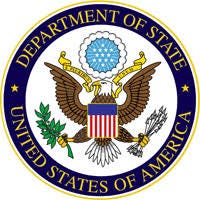Why Indians Should Avoid Loans to Study in the U.S. And U.K.
Rising costs and excess supply of graduates mean fewer jobs and major debt burden for Indian students in the U.S. and U.K.
May 13, 2024
BY IGNATIUS CHITHELEN*
Typically, this month is the deadline for students admitted to universities in the United States to confirm acceptance by sending a deposit or give up their seat. Each May since 2020, Global Indian Times has pointed out that students in India should avoid taking on major educational loans to study in the U.S. This year, GIT also suggests avoiding loans to study at universities in the United Kingdom.
Most Indians graduating from U.S. universities this month need to find well-paying jobs, in the U.S. or elsewhere, just to be able to repay their education debts. They typically take on bank loans, ranging from $100,000 to more than $200,000, to pay the fees and living expenses for their U.S. degrees. Often, the family home in India is put up as collateral for the loans, which carry annual interest rates of more than 13%,
In the 2022-2023 academic year, there were roughly 198,000 Indians studying in the U.S., including 165,000 graduate students. This is nearly three times the total number of Indians on student practical training (OPT) work visas in the country.
The imbalance implies that at best only one in four Indians who graduate from U.S. universities this month may find jobs in the U.S. This is also likely to be the case for most Indians with advanced science, technology, engineering, and math (STEM) degrees from the top U.S. universities.
The job prospects will likely be much worse for Indians considering studying at U.S. universities for the 2024-25 academic year and beyond. This is due to sharply rising supply of foreign graduates, quite apart from any cuts in hiring if there is a downturn in the U.S. economy.
U.S. universities, from state institutions to Ivy League schools, are dealing with budget cuts and rising costs, especially for faculty and staff. Instead of cutting costs, they seek to boost their tuition fee revenues. So, they create and offer dozens of new programs, mainly Masters’ degrees, many of which are of questionable quality and offer few job prospects.
Worse, many U.S. universities are also recruiting far more students, if needed by lowering their admission standards. Some big-name universities have tripled and quadrupled the class sizes for their Masters’ degrees in computer science, data analytics and other popular STEM and business programs; in some cases, with classes of up to 1,000 students.
Foreign students find STEM degrees more attractive since it qualifies them for a three-year practical training work visa, compared to two years for non-STEM graduates. Indians pursuing MBAs and social science degrees take on a far greater risk of being unable to pay back their educational loans and risk losing their family homes to the banks. This is because even if they get a practical training job, their visa is valid for only one year.
Many U.S. universities offer teaser “scholarships” that cover only 10% to 20% of the total costs. Apparently, they expect Indians – as well as other admitted students - will take the bait and secure loans to pay for the rest of their expenses. Several U.S. universities pay fees to recruiters in India for referring and recruiting students.
Even assuming an Indian can find work in the U.S. upon graduation, the job may not last long. In 2022 and 2023, an estimated 150,000 Indians on temporary work visas in the U.S. - many of them waiting in line for permanent residency or green cards - were laid off.
The total number of Indian professionals in the U.S. who effectively lose their jobs each year is much higher. There are several thousand Indians on practical training visas who are not re-hired on professional or H-1B work visas. Also, there are thousands on H-1B visas who are not sponsored for a green card. Their employment ends after two or three years, for those on practical training visas, or six years, for those on H-1B visas. Such job cuts are typically not disclosed by employers on technical grounds that an employee’s work visa had expired.
Executives at major U.S. tech companies and their lobbyists issue periodic statements asking the U.S. administration to issue more work visas and green cards. Yet, despite their massive financial and political clout, the tech companies have not gotten an increase in green cards over the past 32 years.
It appears that companies in the U.S. manage their supply of entry level engineers, and other skilled professionals, by using the swing labor capacity provided by foreigners, mainly Indians, and the system of temporary work visas.
The hiring and firing of foreigners on temporary work visas effectively provides a swing capacity of skilled labor for U.S. companies and organizations. In 2022, for instance, the top 30 H-1B employers hired more than 34,000 new H-1B workers, according to a report by the Economic Policy Institute. In 2022, and the first quarter of 2023, the top 30 H-1B employers also laid off at least 85,000 H-1B workers.
The job prospects and education loan burden of Indian students in the United Kingdom are similar to those for Indian students in the U.S. Foreign graduates of U.K. universities have one advantage. Unlike in the U.S., they are allowed to stay and work in the country for up to two years. But, as in the U.S., universities in the U.K. are also facing budget cuts. So, they too are creating dozens of advanced degrees, many of little job value, as well as vastly expanding the class size of popular STEM and business programs.
In fact, quite apart from the weak U.K. economy, the job prospects for foreign STEM graduates of U.K. universities are far worse. They also compete for jobs with foreign graduates of the top U.S. universities who qualify for temporary U.K. work visas. Known as High Potential Individual visas, they are offered to foreign STEM graduates of the top 37 non-UK based universities in the world – 20 of them in the U.S. – even if the graduates have no job offers in the U.K.
Till last year, Canada was a relatively good option for Indian students pursuing foreign advanced degrees and jobs, compared to the U.S. and U.K. This is because in Canada the tuition fees and costs are lower; foreign students can work up to 20 hours a week and during school breaks without a work permit; the chances of getting a work visa after graduation are very high; most graduates get permanent residency within five years; and STEM graduates with advanced skills can get a permanent resident visa in about three months.
Not surprisingly, in 2023, there were roughly 320,000 Indians studying in Canada, up 47% from 2018.
But, for the upcoming 2024-25 academic year, Canadian visas issued to Indian students have fallen by more than half. This is in part due to a processing backlog since 41 Canadian officials – two thirds of the embassy staff - had to leave India last year. Relations between India and Canada soured after the Canadian government alleged that agents of the Government of India killed a Canadian citizen, Hardeep Singh Nijjar, in British Columbia, Canada, last June.
Skilled Indians should follow the path pursued by many of the top graduates of the world-renowned Indian Institutes of Technology. They take up well-paying jobs at Google, Microsoft, or other global companies in India. Some of them get transferred to higher paying postings in Singapore, the Middle East, Western Europe, and the U.S. This path allows Indian professionals, who work in India, to earn a good income, while avoiding up to $200,000 in debt to pursue advanced degrees in the U.S., in the hope of finding a job and ultimately a permanent residency or green card.
According to a study by the Cato Institute, a policy organization based in Washington DC, “New applicants from India will face a lifetime wait, and more than 400,000 will die before they receive a green card.”





